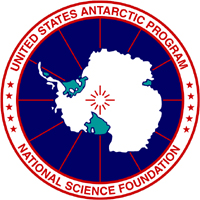 Blog Posts | About OPERATION: DEEP FREEZE | Meet Lt. Col. Vaughan
Blog Posts | About OPERATION: DEEP FREEZE | Meet Lt. Col. Vaughan
The Series
Dispatches from Antarctica provides an inside look at OPERATION: DEEP FREEZE, the military’s support of National Science Foundation (NSF) research in Antarctica. The series features daily blog posts from US Air Force Lt. Col. Ed Vaughan, commander of the McMurdo Station Detachment of Joint Task Force – Support Forces Antarctica, covering the people, places, and things he encounters during his 50 days supporting NSF’s science mission.
Do you have a question for Lt. Col. Vaughan? Anything you’d like to learn about Antarctica? Leave a comment on this page or any of his blog posts!
Blog Posts
42. Nov 20, 2010: Relentless Execution: The Final Dispatch from Antarctica
41. Nov 19, 2010: Super-Pressure Balloon Launch [video]
40. Nov 18, 2010: Making the Grade: Kinser Elementary School
39. Nov 17, 2010: Making the Grade: Osan American Elementary School
38. Nov 16, 2010: Making the Grade: DoDEA Guam High School
37. Nov 15, 2010: Making the Grade: Arnold Elementary School
36. Nov 12, 2010: Recycling Rocket Bottles is a Blast [video 1, video 2]
35. Nov 10, 2010: Never-before-seen Penguin Feeding and Nest Tending Videos
34. Nov 10, 2010: Advancing STEM Education through Penguin Research
33. Nov 9, 2010: Joint Airdrop Inspection [video]
32. Nov 8, 2010: Penguins Marching Into Your Classroom #1
31. Nov, 7, 2010: Cockpit Views of a Ski Takeoff and Landing [takeoff, landing]
30. Nov 6, 2010: Tour of McMurdo General Hospital [video]
29. Nov 1, 2010: Contributing to Marine Pollution by Washing Your Face [video, photos]
28. Oct 29, 2010: Scientists Chase the Ozone Hole [video, photos]
27. Oct 28, 2010: Tragedy on the Ice [video]
26. Oct 27, 2010: LC-130 Landing from Pilot’s Point of View [video]
25. Oct 26, 2010: LC-130s Arrive: All Hail the Ski-Bird! [video, photos]
24. Oct 20, 2010: Dark Side of the World [video, photos]
23. Oct 19, 2010: Renewable Energy Powering Research Stations [video]
22. Oct 18, 2010: The Ice is Alive with the Sound of Music [video]
21. Oct 17, 2010: Iron Chef Antarctica [video]
20. Oct 16, 2010: When James Bond Meets Grizzly Adams on Skis [video]
19. Oct 15, 2010: In Their Own Words: C-17 Pilots Visit McMurdo Station [video]
18. Oct 14, 2010: Repairing a Crack in the Seasonal Ice Runway [video]
17. Oct 13, 2010: Where’s the romance?
16. Oct 12, 2010: Weather Conditions “Like No Other” [video]
15. Oct 11, 2010: Dr. Pauline Yu Talks Sea Urchins and Climate Change [video]
14. Oct 10, 2010: Living at McMurdo Station #1 [video]
13. Oct 9, 2010: Military Science Liaisons Provide Essential “Lifeline”
12. Oct 8, 2010: Interview with Aeromedical Evacuation Technician [video]
11. Oct 7, 2010: Interview with Laboratory Science Manager [video]
10. Oct 6, 2010: Lost and Found Frozen
9. Oct 5, 2010: A Birthday Greeting [video]
8. Oct 4, 2010: Super-Pressure Balloons Key to International Research Project [photos]
7. Oct 3, 2010: Former Winter Olympian Back on the Ice [video]
6. Oct 2, 2010: The Coolest Promotion Ceremony Ever
5. Oct. 1, 2010: Night Vision Goggle Training Mission [video, photos]
4. Sept. 30, 2010: Interagency Support of Science
3. Sept. 29, 2010: C-17 Ice Landing Video [video]
2. Sept. 28, 2010: Flight to the Ice
1. Sept. 27, 2010: Before the Ice
- Back to Top -
About OPERATION: DEEP FREEZE
Today, Operation DEEP FREEZE (ODF) is a joint service, on-going Defense Support to Civilian Authorities (DSCA) activity in support of the National Science Foundation (NSF), lead agency for the United States Antarctic Program (USAP). Chairman of the Joint Chiefs of Staff (CJCS) designated the Commander, US Pacific Command (CDRUSPACOM), be responsible for execution of this DSCA operation. CDRUSPACOM created Joint Task Force – Support Forces Antarctica (JTF-SFA) to carry out ODF, and appointed the Commander, 13th Air Force, to also serve as Commander, JTF-SFA (CJTF-SFA).
Within the scope provided by NSF policy and direction, JTF-SFA forces coordinate with inter-agency and international partners to provide air and maritime cargo and passenger transport throughout the Antarctic Joint Operations Area (JOA). JTF-SFA forces consist of active duty, Guard and Reserve personnel from the U.S. Air Force, Navy, Army, and Coast Guard as well as DOD civilians and attached non-DOD civilians. ODF operates from two primary locations situated at Christchurch, New Zealand and McMurdo Station, Antarctica. Under the NSF’s lead, ODF works closely with other national Antarctic programs, to include those of New Zealand, Australia, and Italy. (learn more…)
- Back to Top -
Meet Lt. Col. Ed Vaughan

Lt. Col. Edward Vaughan, Commander, 13th Expeditionary Support Squadron, Joint Task Force – Support Forces Antarctica.
Lieutenant Colonel Ed “Hertz” Vaughan is deployed to McMurdo Station, Antarctica for 50 days as commander of the Joint Task Force – Support Forces Antarctica (JTF-SFA) detachment, supporting the United States Antarctic Program (USAP). During the early part of the 2010-11 austral summer season, he will serve as senior U.S. military officer in Antarctica, supporting the National Science Foundation’s (NSF) science mission. When not deployed, Colonel Vaughan serves as Chief, Joint Operations and Plans on JTF-SFA staff at Joint Base Pearl Harbor-Hickam, Hawaii, where he reports to the Deputy Commander, JTF-SFA.
Col Vaughan began his military flying career by serving part-time in the New York Air National Guard’s 109th Airlift Wing as an LC-130 polar navigator and later, pilot. He first deployed to the Greenlandic icecap in 1992 and began flying Operation DEEP FREEZE (ODF) missions in Antarctica during the 1993-94 USAP season. He subsequently participated in six more ODF seasons, in both flying and non-flying roles. (see full biography…)
- Back to Top -





